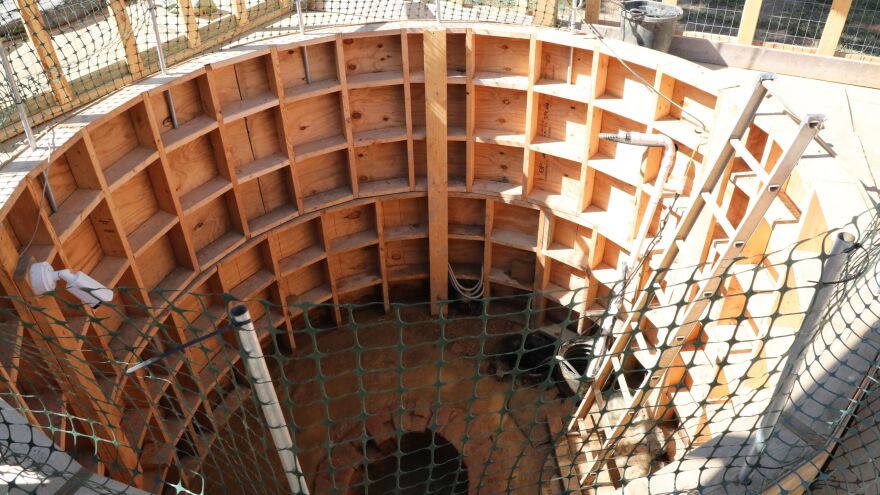Read the original story on WHRO's website.
The only 17th-century piece of Jamestown still above ground is the bell tower of the Jamestown Memorial Church.
Preservation Virginia and Jamestown Rediscovery celebrated the future installation of a glass roof on the inside wall of the structure this week. The roof will protect the building's interior, said Jim Horn, of the Jamestown Rediscovery Foundation.
“We do want to celebrate the fact that we are going to put a roof on the church to keep the weather out,” Horn said.

The church tower roof and a nearby excavation of a well are ushering in a new phase of preservation at Jamestown, where English colonists first landed in Virginia in 1607 and enslaved Africans followed in 1619. With the surrounding James River encroaching on what could be valuable historic evidence, time is of the essence for archaeologists and preservationists to dig what they can from gray Jamestown mud.
Preservation Virginia CEO Elizabeth Kostelny said preserving the tower is vital to the entire settlement. For many years, she said, people thought the tower was the only piece left of the town.
“Generations thought Jamestown was gone," she said. "[A]nd we were able to, through the good work of this team here, prove that Jamestown is still here, awaiting to be studied.”
Everything left from the early days of the settlement is in the mud beneath the island.
Finding the well was the highlight of archaeologist Natalie Reid’s three years working at Jamestown.
She heard the bricks of the structure before she saw them.
“And I immediately realized there was either a well or a foundation here, but it was going to be something big — and it was indescribable,” Reid said.
The treasure Reid and other researchers found at the bottom of the 17th-century well isn’t treasure in the traditional sense. They were looking for spoons, seeds, leather boots and combs. They also found a sword.

Four hundred years ago, wells were used as refuse pits after they ran dry.
“It means they're preserved remarkably,” Reid said. “The only place around Jamestown Island that we found intact leather shoes and other organic materials is at the bottom of wells.”
David Givens, director of archaeology at Jamestown Rediscovery, found the sword at the bottom of the well, which was otherwise full of leather goods, rope and seeds.
His favorite find, though, was a copper-alloy spoon. Givens said archaeologists are supposed to stay professional and impassive as they work. But he found it hard to do that when he touched the mud-caked spoon and felt a strong connection to the past.
“There are poignant moments in which you say, ‘Wow, I found somebody's spoon that they dropped in the well 406 years ago.’ And that is an emotive moment,” he said.
On a much larger scale, Givens said, the Jamestown artifacts tell the story of a fledgling nation.
“It only underscores the importance of Jamestown in a larger discussion and narrative of how we became American,” he said. “Archeology puts you in touch with an exceptionally diverse past of first peoples, first English and first Africans who were forcibly brought here in 1619. And that's what we're finding.”


